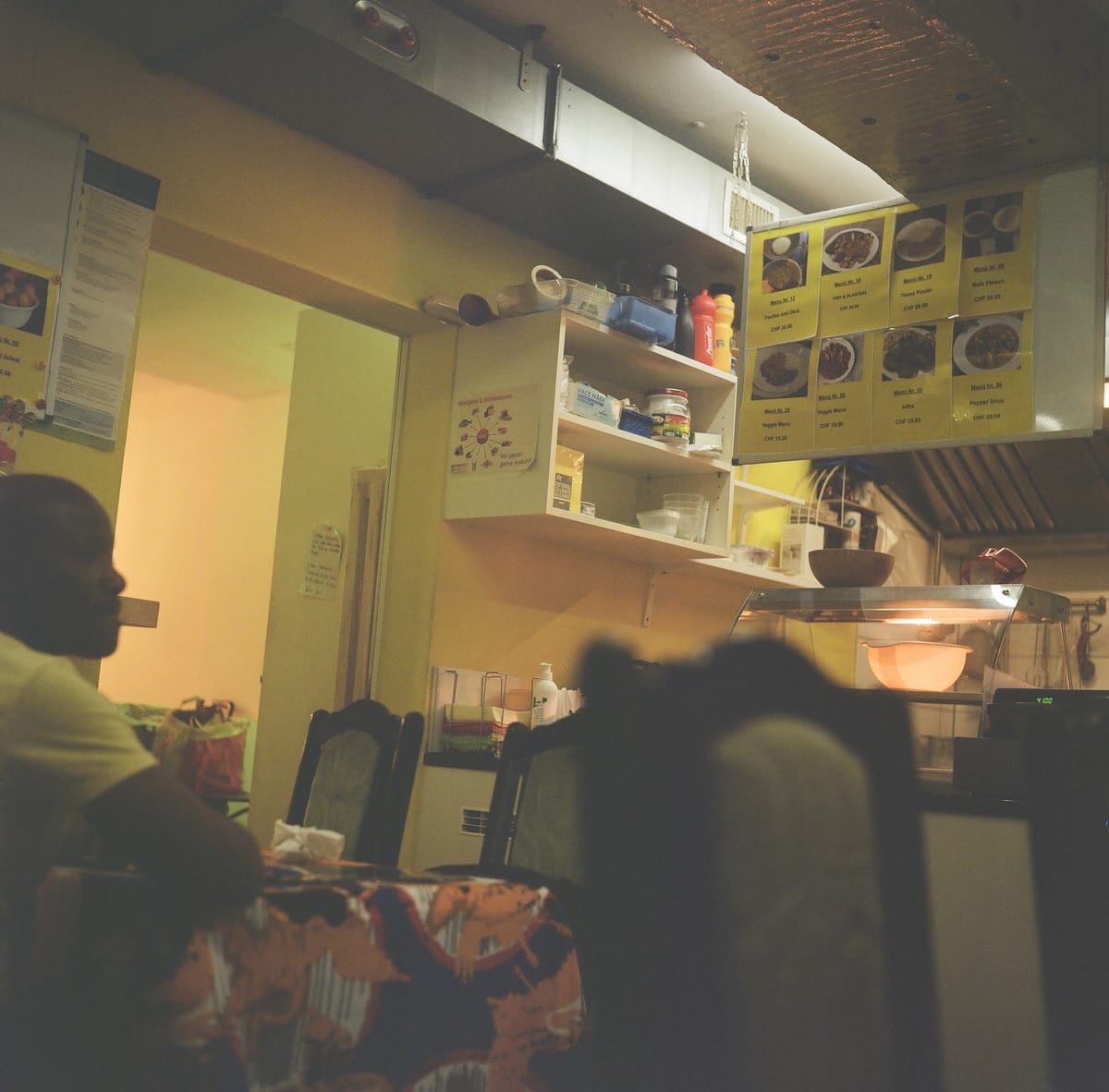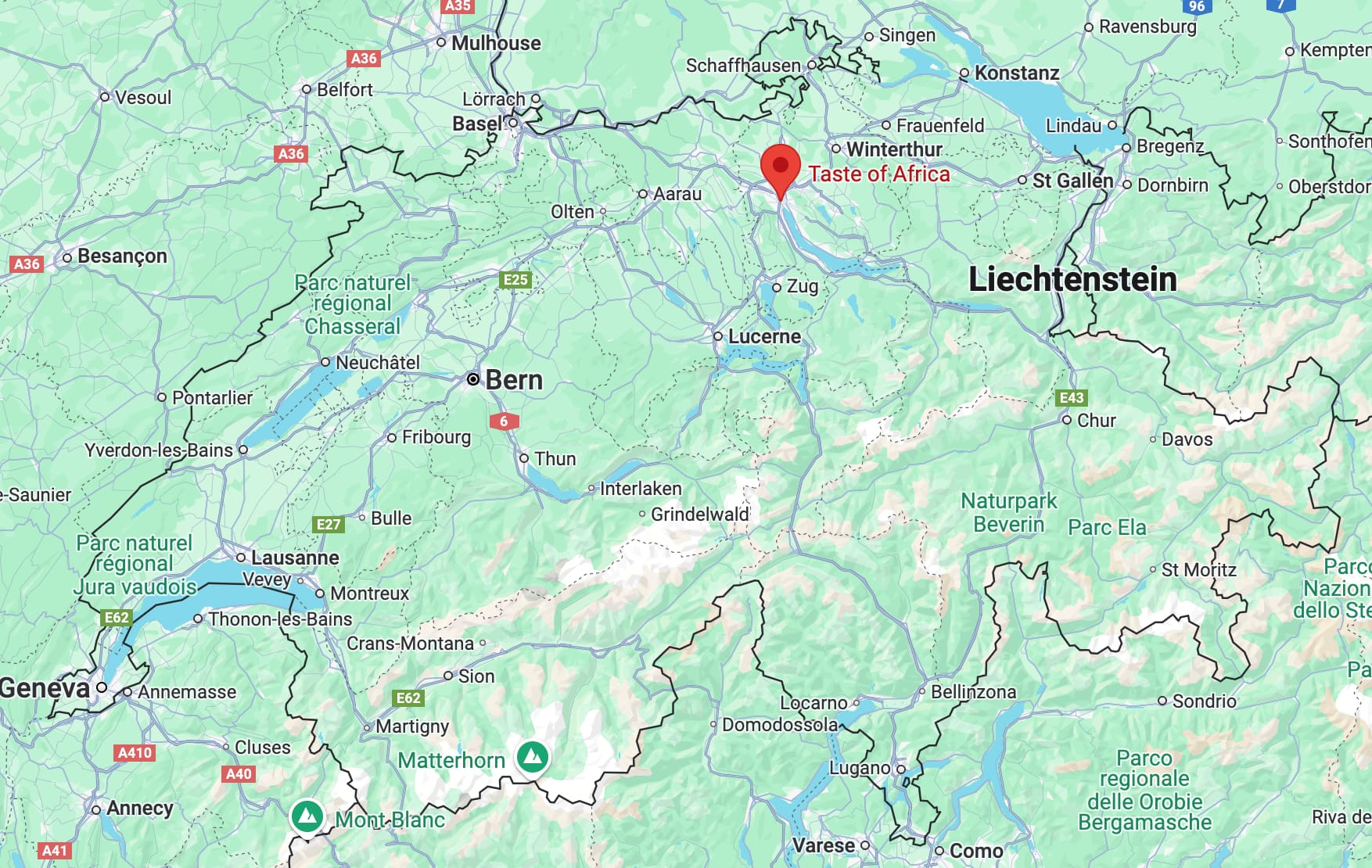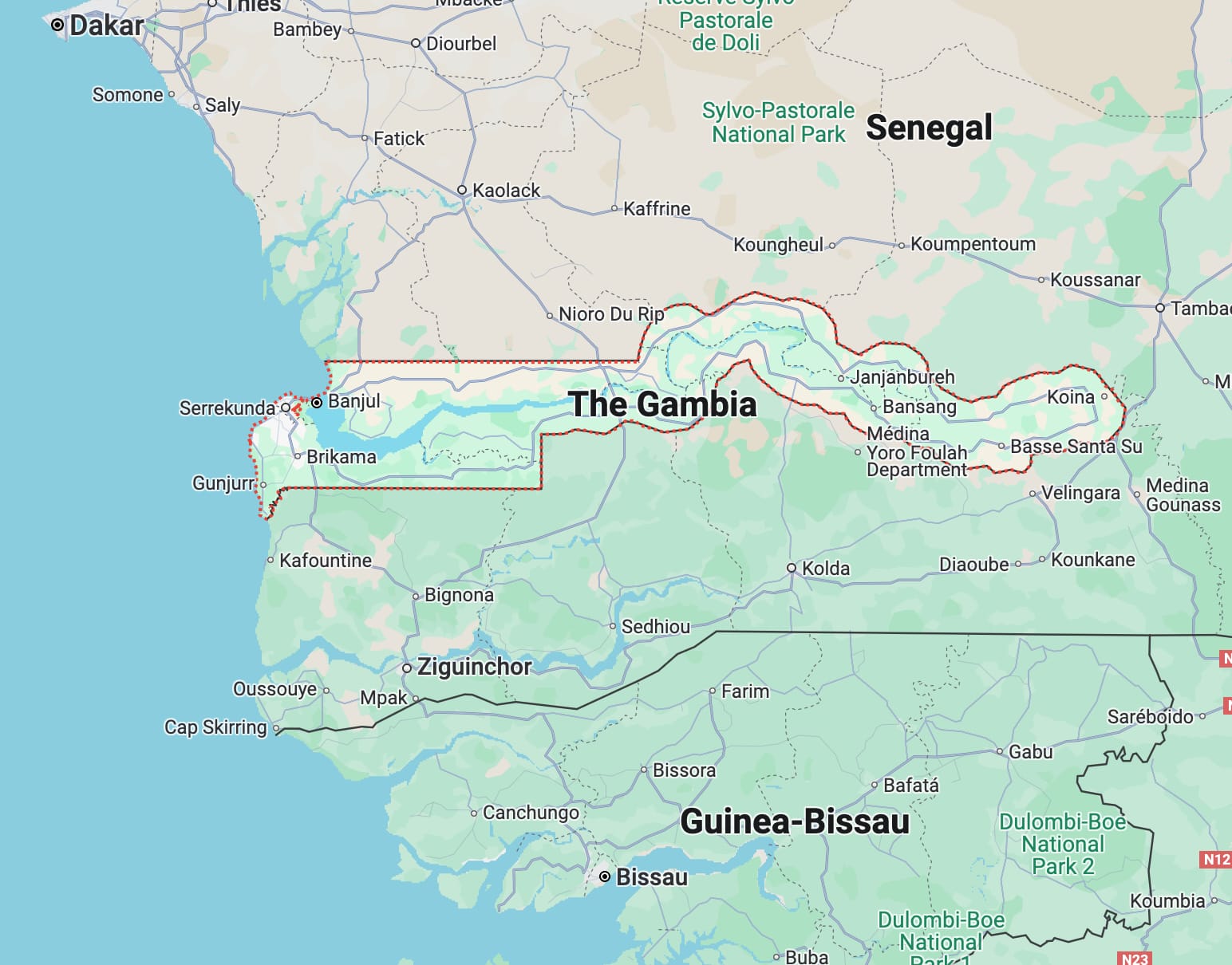Where to eat THE GAMBIA 🇬🇲 Zürich: Taste of Africa
It is a bit like walking into a cool Gambian auntie’s, someone with savvy and spice but also a dispenser of wisdom and one-liners that you feel immediately drawn to... While cooking, there is a multitasking of managing the discourse and also the back of the house.

Taste of Africa
Militärstrasse 117, Zürich

Published September 17, 2024 · by Amanda Rivkin Häsler
What we ordered: For two people, one order of grilled fish served with onions and pepper sauce and fried plantains and an order of beef mafé served with rice. To drink, two small ginger juices and a small hibiscus juice. Beignets were complimentary for dessert.
Cost: 76 CHF / €80 / $89
Taste of Africa is a tiny place, blocks from the Zürich main train station but a continent away at once. With just five tables and a chef who also doubles as a smart and a little sassy host and server, it does not get more charming or homestyle.
With a television in the dining hall alternating between Sky News and Gambian music videos, you feel like you are in someone’s house and that is only because you are. It is a bit like walking into a cool Gambian auntie’s, someone with savvy and spice but also a dispenser of wisdom and one-liners that you feel immediately drawn to.
The distance between the kitchen and the dining room is but a few meters. The kitchen is separated by a thin door that stays open but lends this atmosphere that the chef is cooking from behind her desk. While cooking, there is a multitasking of managing the discourse and also the back of the house. It can feel a bit like the center of a little universe around this awesome but humble authority.
In addition to cooking for the dining room, which was full the night we were there, Taste of Africa also seems to do a robust delivery business. Additionally, they cater for private events and parties.
The food was quite spectacular. The beef mafe was slow cooked in a way that all the flavors came popping out subtly, showcasing a beef so tender it was almost liquid. While it was spicy, it was not hot or uncomfortably so, and served at just the precise moment. It was the type of dish that is consumed two ways, first with the nose, then with the mouth – both ways offering a kaleidoscope of unique scents and spices.
The fish was fried but not oily, so the skin was crispy and cut vertically to make it easier to eat. It was flaky but the pepper and onion ragu that accompanied it, really made the dish. Typically, it might be the sort of thing served with sausages rather than fish in a Western country, but it had an almost Creole flavor this way.
Served with a side of fried plantains so large it honestly could have been an entrée, the natural saltiness of fish was complimented nicely by the sweetness of the fruit. While everything was fried, there was no oil to be found on the plate nor greasiness. It all could have been baked just as well to similar but perhaps less delicious ends.

As The Gambia is a Muslim country, there was no alcohol on offer in this traditional spot, so we had exquisite homemade juices. First, we had a round of ginger juice that was pure ginger with a crisp bite at the end. It might not be possible to ever drink ginger juice or tea again elsewhere.
Georg followed up with a hibiscus juice, due to the heat of his dish in part, which had a pomegranate like color. He said it was just as tasty as the zing of the ginger. For dessert, our host brought us four round beignets to try. They were as rich as anything served at Café du Monde in New Orleans, but without powder sugar, and a bit denser than the classical beignets.
Georg was once in Banjul, the capital of the Gambia, for his previous job as a television correspondent with Swiss public television network SRF. He said that even in The Gambia you do not have food as good as at Taste of Africa. He attributed this in part to the widespread poverty but also because the hotels that cater to Westerners, serve continental food. In the Gambia, Georg said the only ones paying so much meticulous attention to serving local food to foreigners are Indians who came when the British colonized the West African nation.
Overall, Taste of Africa was like a symphony of taste, but a very African symphony. The food was light but spectacular and at a very reasonable price point for Switzerland given the quality and careful preparation and warm hospitality.
Before dinner, Georg also took the opportunity to get a haircut next door at the Neymar barber shop run by a man who grew up in Barcelona but whose family was from the north of India originally. For twenty francs, he said it was the best haircut ever and left him looking like a Bollywood star playing the part of the father of a beautiful girl who is marrying.

How to get to the Gambia from Switzerland:
It is an approximately 63-hour drive from Switzerland to the Gambian capital of Banjul. The journey includes two ferries between Spain and Morocco and at the mouth of the Gambia River from Barra to Banjul.
By air from Zürich, all routes to Banjul require at least two transfers. Swiss Air offers code shares with Brussels Airlines through Brussels, Belgium and Dakar, Senegal. From Geneva, there is a more direct route with a single stopover in Casablanca and a Royal Air Maroc flight on to Banjul.
How many people from Gambia are in Switzerland: Around 700
Distance between Bern and Banjul: 5,446 km
Distance from the restaurant to the country capital: 5,563 km
Learn how to make Gambia's national dish, domoda, and about its origins.
Follow our social media pages @swissglobaldining on Instagram, TikTok and YouTube